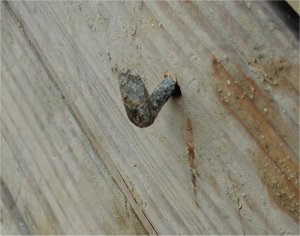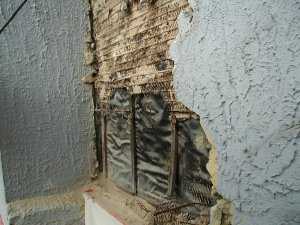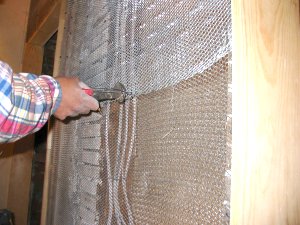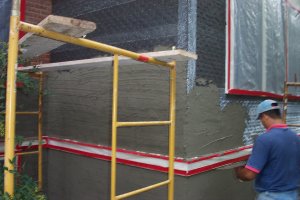Point 10 of my 12 point list of methods for reducing cracking in
portland cement stucco
|
|
Point 10 of my 12 point list of
methods for reducing cracking in portland cement
stucco. Point ten - Good lathing 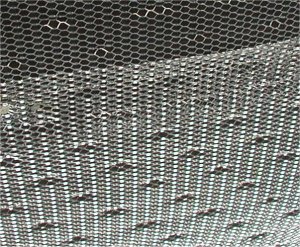 Self furring lath Deep cracks and loose areas caused by bad lathing are impossible to repair, without the repair coming back to haunt. The reasons for metal lath are: 1. Support (to hold the mortar up) 2. Reinforcement -increased tension strength Self furring lath has punches 1/4" deep, or "furs" to hold the lath away from the wall. This allows mortar to penetrate well behind the lath for good support and good embedding of the lath for reinforcement. I see flat lath used sometimes for stucco. Although the mortar will hang on enough to hold it on, it is still an inadequate method. Out west they use self-furring stucco mesh. Some brands
have the punches painted with a dot of yellow or red
paint, for easier alignment to the studs. In California
they call the diamond mesh lath we use here,
"K-lath". Doing restuccos, we find different techniques used by our forefathers for furring lath. One method was driving U shaped nails in the wall about
12" apart. When the lath was put on it was the nails
were placed directly over the first nails,
allowing the first nails to hold the lath away from the
wall. Furring
strips
don't work Mortar doesn't key behind the strips, forming a long
weak area that is liable to crack. These strips here
weren't strong enough to permanently support the
stucco.This wall had failed and had been patched
several times over the years. |
